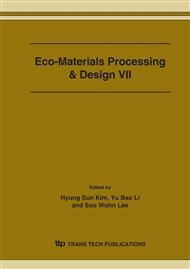p.342
p.346
p.350
p.354
p.358
p.362
p.366
p.370
p.374
High Temperature Mechanical Properties of Ni-Al-Cr Based Alloys with Refractory Alloying Elements
Abstract:
We report on advanced Ni3Al based high temperature structural alloys with refractory alloying elements such as Zr and Mo to be apllied in the fields of die-casting and high temperature press forming as die materials. The duplex microstructure consisting of L12 structured Ni3Al phase and Ni5Zr intermetallic dispersoids was observed to display the microstructural feature for the present alloys investigated. Depending on alloying elements, the volume fraction of 2nd phase was measured to be different, indicating a difference in solid solubility of alloying elements in the matrix γ’ phase. Lattice parameter of matrix phase increased with increasing content of alloying elements. In the higher temperature region more than 973K, the present alloys appeared to show their higher strength compared to those obtained in conventional superalloys. On the basis of experimental results obtained, it is suggested that refractory alloying elements have an effective role to improve the high temperature strength in terms of enhanced thermal stability and solid solution hardening.
Info:
Periodical:
Pages:
358-361
Citation:
Online since:
March 2006
Authors:
Price:
Сopyright:
© 2006 Trans Tech Publications Ltd. All Rights Reserved
Share:
Citation:


